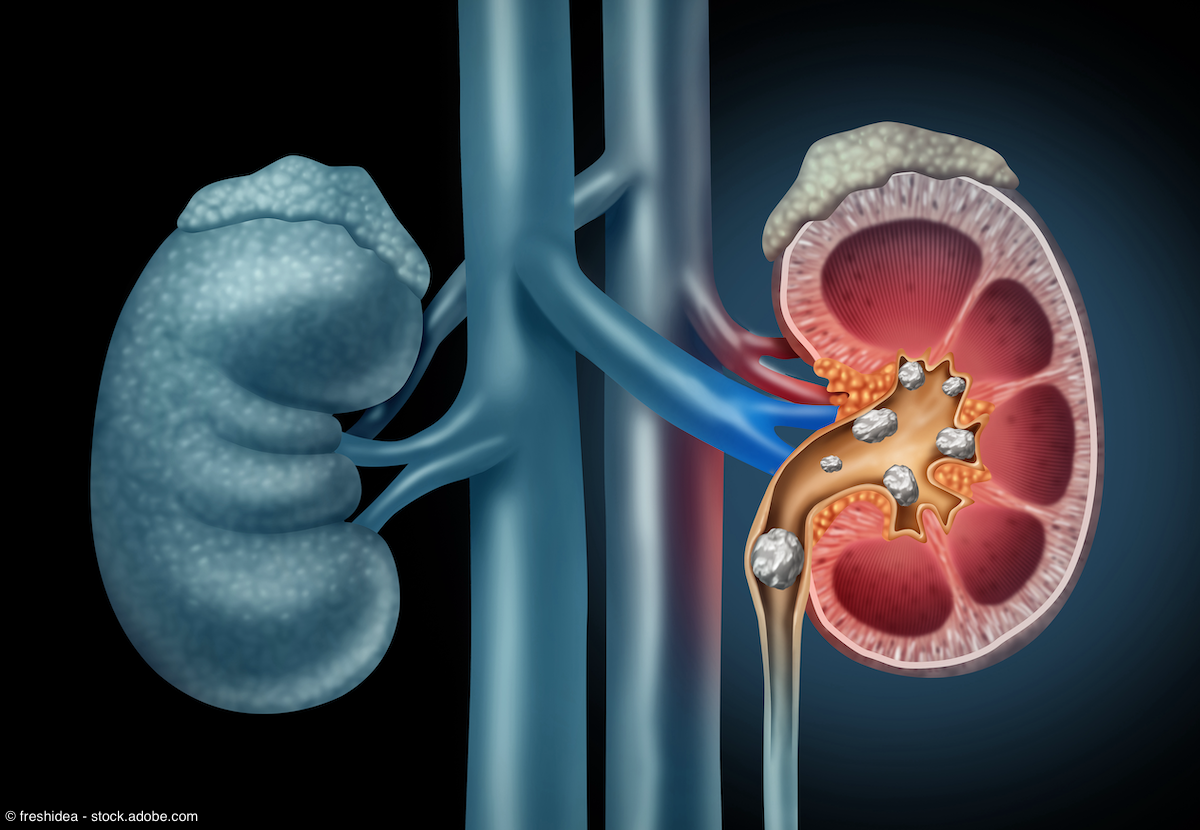Mini-PCNL has higher stone-free rate than ureteroscopy and similar cost burden
The trial assessed outcomes in patients who had kidney stones between 1 to 2 cm.
Patients with intermediate-sized kidney stones who underwent mini-percutaneous nephrolithotomy (mPCNL) were more likely to achieve stone-free outcomes compared with those who underwent ureteroscopy (URS), new findings show.1,2
Stones were fragmented and removed with a basket device for both procedures.

Data from the study were published in the Journal of Urology.
"In patients with intermediate-sized kidney stones, mini-PCNL may offer a more effective procedure, with similar safety and cost impact,” said senior author Jorge Gutierrez-Aceves, MD, in a news release on the findings.2 Gutierrez-Aceves is a center director for endourology and stone disease at Cleveland Clinic.
The prospective, randomized, controlled trial included patients who had kidney stones between 1 to 2 cm. They were randomized to receive mPCNL (n = 51) or URS (n = 50). Patients were excluded from the study if they had multiple stones, a solitary kidney, or comorbidities that precluded prone positioning.
Stones were fragmented and removed with a basket device for both procedures.
Data showed that stone-free rate with the 2-mm cutoff was achieved in 76% of patients who underwent mPCNL, compared with 46% of patients who underwent URS (P = .0023). The average total volume of residual stones among those who underwent mPCNL was 1.4 mm compared with 3.6 mm for those who underwent URS (P = .0026).
Patients who underwent mPCNL had a longer length of stay, with an average of 1 night in the hospital compared with those in the URS group (P < .0001), who were not kept overnight. Fluoroscopy time was also found to be significantly higher in the mPCNL group, which had an average time of 273 seconds, compared with 49 seconds in the URS group (P < .0001).
Postoperative 30-day complications were similar among the 2 groups, with a rate of 2% among the mPCNL group and 4% among the URS group (P = .6). The need for a secondary procedure within 30 days (P = .7), pre- to post-operative creatinine change (P = .6), and overall surgical time also did not vary significantly between the 2 groups (P = .2).
When looking at costs, the investigators found that both net revenue and direct costs were higher among patients in the mPCNL group (P < .05). However, these costs were found to offset each other due to the nonsignificant operating margin (P = .2541).
References
1. Dutta R, Mithal P, Klein I, Patel M, Gutierrez-Aceves J. Outcomes and costs following mini-percutaneous nephrolithotomy or flexible ureteroscopic lithotripsy for 1-2–cm renal stones: data from a prospective, randomized, clinical trial. J Urol. May 9, 2023. Accessed May 23, 2023. doi:10.1097/JU.0000000000003397
2. ‘Mini-PCNL’ surgery has higher stone-free rate in treating intermediate-size kidney stones. News release. Wolters Kluwer Health: Lippincott. May 10, 2023. Accessed May 23, 2023. https://www.newswise.com/articles/mini-pcnl-surgery-has-higher-stone-free-rate-in-treating-intermediate-size-kidney-stones?sc=mwhr&xy=10016681
Alkaline water unlikely to prevent kidney stones, study finds
January 11th 2024"While alkaline water products have a higher pH than regular water, they have a negligible alkali content–which suggests that they can't raise urine pH enough to affect the development of kidney and other urinary stones," says Roshan M. Patel, MD.
Microbiome alterations linked to kidney stone formation
December 21st 2023"If the diversity and robust functional potential of the healthy human microbiome is repeatedly assaulted by the average Westernized lifestyle via antibiotic exposure, diet, and other environmental factors, kidney stone prevalence will continue to increase," the authors write.
